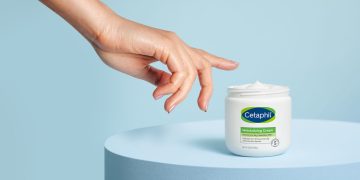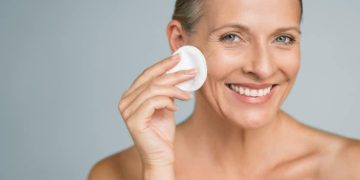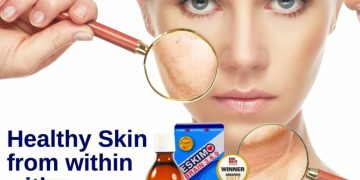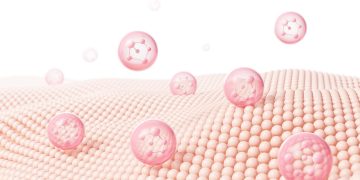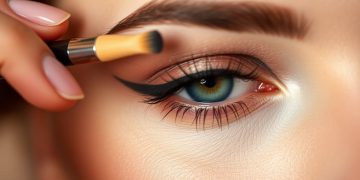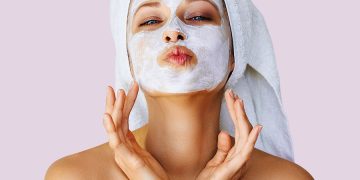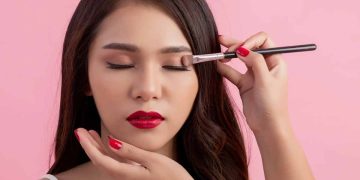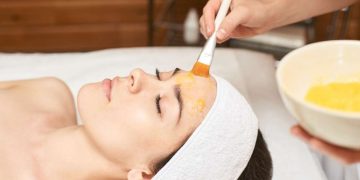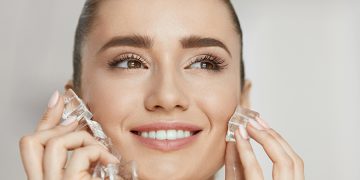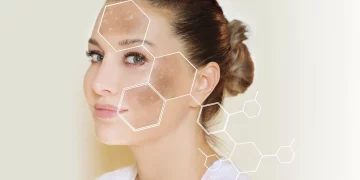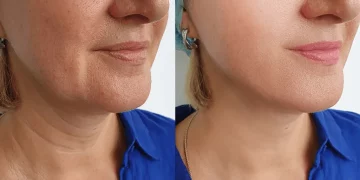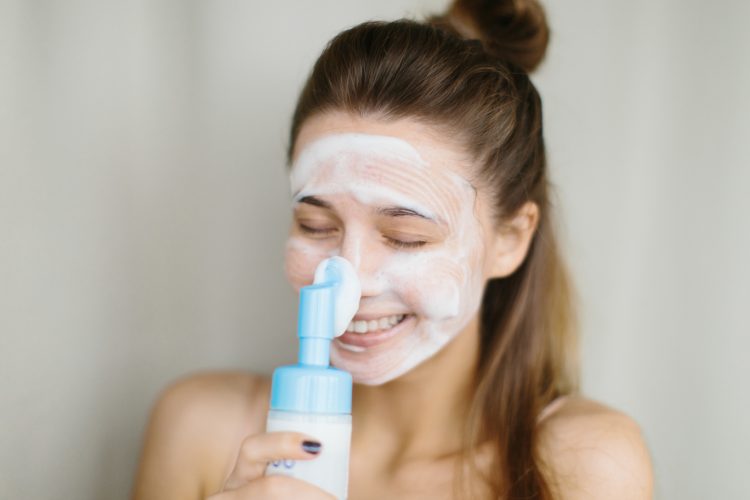As we age, our skin undergoes several transformations. Fine lines, wrinkles, sagging, and age spots are common skin concerns that become more prominent as we grow older. While there is no way to stop the natural aging process, there are various skincare ingredients that can help combat these signs, leaving you with a youthful, radiant complexion. In this article, we will explore the top five anti-aging skincare ingredients you should look for to help fight wrinkles and promote youthful skin.
1. Retinoids (Retinol and Retinoic Acid)
Retinoids are arguably the most well-known and widely used anti-aging ingredient in skincare. Derived from Vitamin A, they are essential for promoting cell turnover and stimulating collagen production in the skin. Collagen is a protein that helps keep the skin firm and plump. As we age, collagen production decreases, leading to wrinkles and sagging skin.
Benefits: Retinoids work by speeding up the skin’s natural exfoliation process, encouraging the production of new skin cells. This helps to reduce the appearance of fine lines, wrinkles, and age spots. Retinoids can also improve skin texture and tone, making the skin appear smoother and more radiant.
Types of Retinoids:
- Retinol: A milder form of Vitamin A that can be found in over-the-counter products.
- Tretinoin (Retinoic Acid): A prescription-strength form of Vitamin A that is more potent and effective for deeper wrinkles.
Usage: Start with lower concentrations of retinol to avoid irritation. Use at night, as retinoids can make your skin more sensitive to sunlight. Always apply sunscreen in the morning when using retinoids.
Side Effects: Some individuals may experience irritation, redness, or peeling, especially during the initial stages of use. It’s important to gradually introduce retinoids into your skincare routine to allow your skin to adjust.
2. Vitamin C (Ascorbic Acid)
Vitamin C is a powerful antioxidant that offers numerous benefits for aging skin. It helps neutralize free radicals—unstable molecules that can damage skin cells and accelerate the aging process. By fighting oxidative stress, Vitamin C helps protect the skin from environmental damage caused by pollution, UV rays, and other external factors.
Benefits:
- Reduces the appearance of fine lines and wrinkles.
- Brightens skin tone and reduces dark spots caused by sun damage or hyperpigmentation.
- Stimulates collagen production, improving skin elasticity and firmness.
- Provides overall skin protection against environmental stressors.
Forms of Vitamin C: There are several forms of Vitamin C used in skincare, such as ascorbic acid, ascorbyl palmitate, and magnesium ascorbyl phosphate. Ascorbic acid is the most effective and potent form but may cause irritation for sensitive skin. L-ascorbic acid is another common variant that is highly stable and effective.
Usage: Vitamin C should be applied in the morning after cleansing and before moisturizing. Since it enhances the effectiveness of sunscreen, it’s ideal to incorporate it into your morning skincare routine.
Side Effects: Some users may experience irritation or tingling sensations when first using Vitamin C, but these effects typically subside as the skin gets accustomed to it. If irritation persists, it is advisable to switch to a more gentle form.

3. Hyaluronic Acid
Hyaluronic acid (HA) is a humectant, meaning it draws moisture into the skin and helps maintain optimal hydration levels. One of the key components of youthful skin is moisture. When skin loses hydration, it becomes dry and less elastic, leading to the appearance of fine lines and wrinkles. HA helps keep skin plump, smooth, and radiant.
Benefits:
- Deeply hydrates and plumps the skin, reducing the appearance of fine lines and wrinkles.
- Improves skin elasticity and firmness.
- Promotes a smoother, more even skin texture.
- Helps restore the skin’s natural barrier, preventing moisture loss.
Types of Hyaluronic Acid:
- High Molecular Weight HA: Sits on the skin’s surface and provides immediate hydration.
- Low Molecular Weight HA: Penetrates deeper into the skin and provides longer-lasting hydration.
- Sodium Hyaluronate: A more stable form of hyaluronic acid that is often used in skincare.
Usage: Hyaluronic acid can be used both morning and night. After cleansing, apply a few drops of HA serum to damp skin for maximum moisture retention. Follow with your favorite moisturizer to seal in the hydration.
Side Effects: Hyaluronic acid is generally well-tolerated by most skin types. However, if you have extremely dry skin, it’s essential to follow up with a moisturizer after using HA to lock in the moisture it attracts.
4. Peptides
Peptides are short chains of amino acids that act as the building blocks of proteins like collagen and elastin. These proteins are essential for keeping the skin firm and youthful. As we age, the production of collagen and elastin declines, leading to sagging skin, wrinkles, and reduced skin elasticity. Peptides can help restore these proteins, improving the skin’s structure and appearance.
Benefits:
- Stimulate collagen and elastin production, helping to improve skin firmness and elasticity.
- Reduce the appearance of wrinkles and fine lines.
- Strengthen the skin barrier, improving overall skin health.
- Enhance skin repair and regeneration.
Types of Peptides:
- Signal Peptides: Encourage collagen and elastin production.
- Carrier Peptides: Deliver essential minerals to skin cells to support regeneration.
- Enzyme-inhibitor Peptides: Reduce the breakdown of collagen and elastin in the skin.
Usage: Peptides are usually found in serums and moisturizers. Apply them after cleansing and toning, and before applying thicker products like moisturizers.
Side Effects: Peptides are generally well-tolerated, but some people with sensitive skin may experience mild irritation. It’s always best to patch-test new products to avoid adverse reactions.
5. Alpha Hydroxy Acids (AHAs)
Alpha Hydroxy Acids, such as glycolic acid and lactic acid, are exfoliants that help to remove dead skin cells from the surface. This process promotes the regeneration of new skin cells, improving the texture and appearance of the skin. AHAs are particularly effective for treating sun damage, dark spots, and uneven skin tone, which are common signs of aging.
Benefits:
- Gently exfoliates the skin to reveal a brighter, smoother complexion.
- Reduces the appearance of fine lines, wrinkles, and hyperpigmentation.
- Stimulates collagen production, improving skin texture.
- Helps improve skin tone and clarity by fading dark spots and discoloration.
Types of AHAs:
- Glycolic Acid: Derived from sugarcane, it is the most popular and effective AHA for anti-aging purposes.
- Lactic Acid: Derived from milk, it is gentler and more hydrating compared to glycolic acid.
- Citric Acid: Derived from citrus fruits, it is often used for brightening the skin.
Usage: AHAs should be used in the evening after cleansing. Start with a lower concentration and gradually increase it to avoid irritation. Always wear sunscreen in the morning, as AHAs can increase your skin’s sensitivity to the sun.
Side Effects: Since AHAs exfoliate the skin, they may cause irritation, redness, or peeling, especially for those with sensitive skin. It’s important to gradually incorporate them into your skincare routine and use sunscreen to prevent sun damage.
Conclusion
Incorporating these top five anti-aging ingredients—retinoids, Vitamin C, hyaluronic acid, peptides, and AHAs—into your skincare routine can help promote youthful, radiant skin. Each ingredient offers unique benefits that address different signs of aging, from fine lines and wrinkles to uneven skin tone and loss of elasticity. Be sure to choose products that match your skin type and concerns, and always introduce new ingredients gradually to minimize irritation. Consistent use of these powerful ingredients, along with proper sun protection, can help you achieve healthier, more youthful-looking skin.

